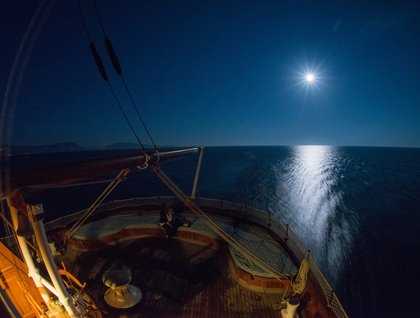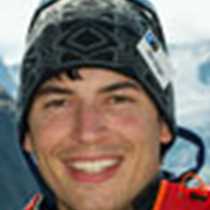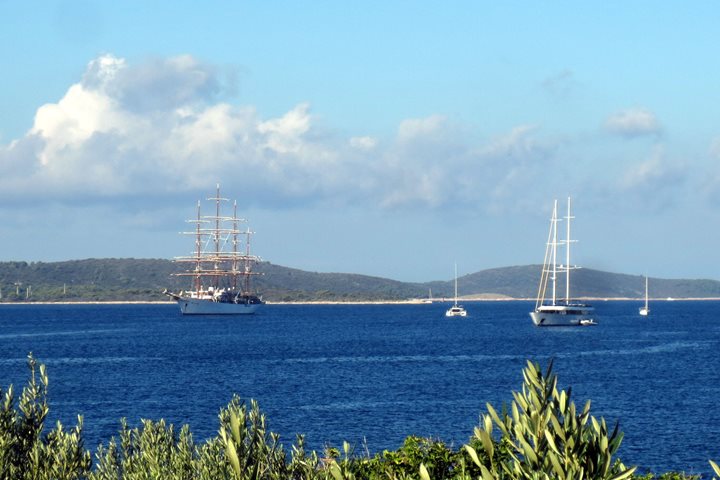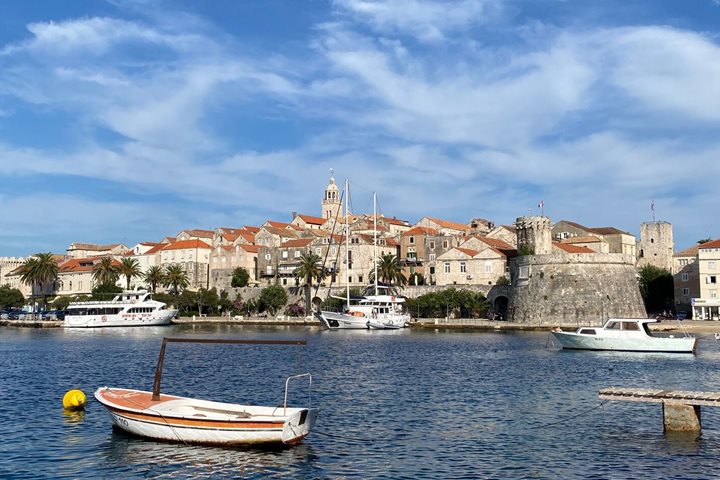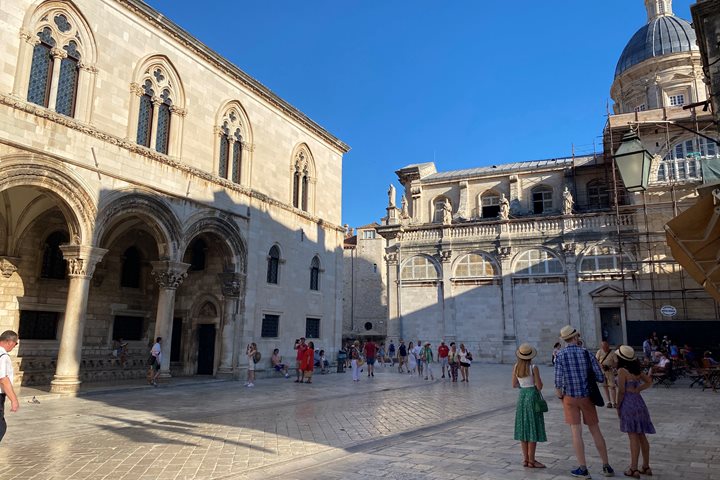On a true square-rigger, it is the captain who makes the sail plan by deciding where he wants to be at the end of the day, calculating the speed he thinks he can make in the anticipated wind conditions with the sail configuration that he determines to be best for the situation. A square-rigged tall ship like Sea Cloud cannot really sail into the wind, so the captain has to look for the best sailing in the general directions of the given wind. Referencing a variety of wind and weather forecasts and models, it appeared that all of the wind in the region would be on the Aegean side of the Peloponnesus peninsula, with the Ionian side and the southern transition being completely still for the next two days.
Thus, we had decided to anchor overnight in the guise of the Temple of Poseidon at Cape Sounion, marking the entrance into the Aegean Sea where King Aegeus had leapt to his death when his victorious son Theseus had forgotten to change his black sails to white to indicate that he had successfully slain the Minotaur in the labyrinth of King Minos of Kreta. The illuminated temple was an inspiring start to our voyage that would take us through the Aegean, Ionian, and Adriatic Seas in the upcoming ten days. We would begin by setting Sea Cloud’s white sails in the Aegean this morning, where we had better hopes of a following wind.
At 0845 the expedition leader was on the spanker deck giving the “play-by-play” description of the setting of the sails, as the crew scrambled aloft to “loose the gaskets” and then returned to the decks to haul the sheets and the halyards to set all the square sails, the inner and outer jibs, and the three topmast staysails. It was a magnificent sight and feeling to cut the engines and feel the power of the 20-knot wind filling the sails as we all explored the glory of this four-masted barque on our southerly sail through the western Aegean.
We all spent the day finding our favorite spots on the ship, trying to make sense of the constellations of sails and maze of rigging, and hearing our first presentations from our expedition staff. Photographic instructor Max Seigal gave a talk on photographic techniques, and maritime historian Robyn Woodward talked about the exciting field of nautical archaeology and some of the shipwrecks that had been excavated in the region. As expected, when we reached the southern end of the Peloponnesus, the wind completely died so the deck crew went to sail stations to clew up the sails and again scrambled aloft into the rigging to furl the sails for the evening. Captain Pushkarev concluded the day with an introduction to his very proud and capable team of officers, followed by a most impressive Welcome Dinner prepared by chef de cuisine Uwe Poehlmann and his galley team. On to the Ionian Sea tomorrow!

